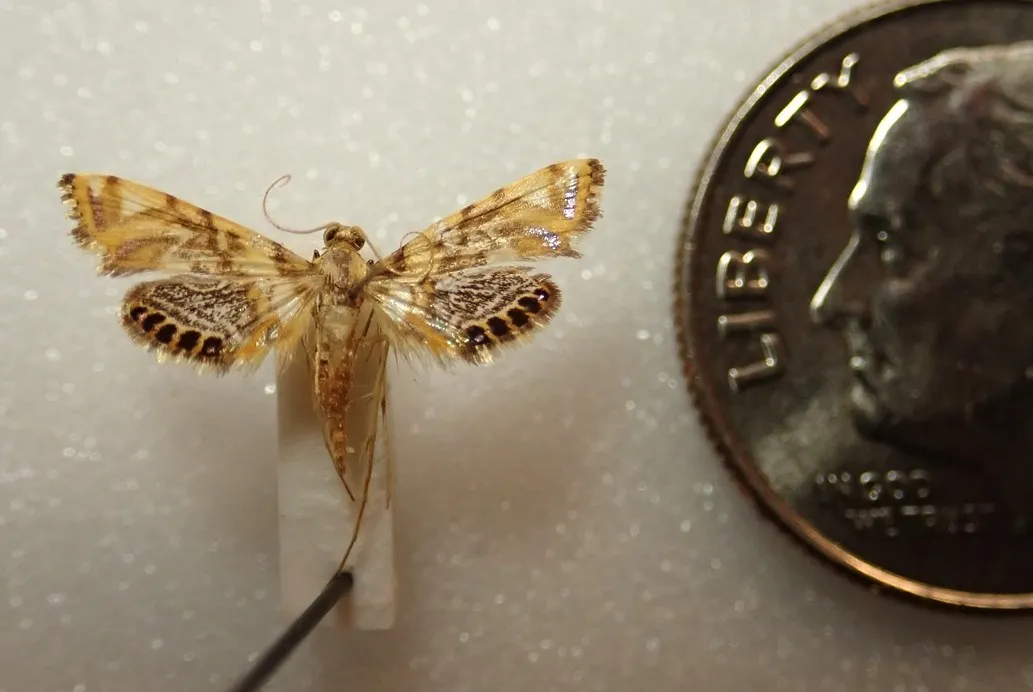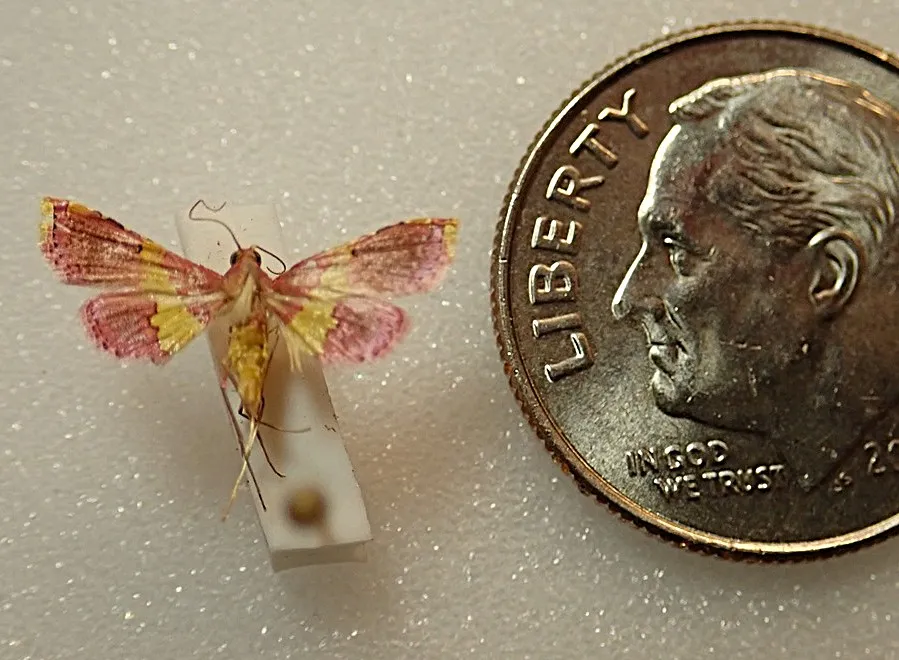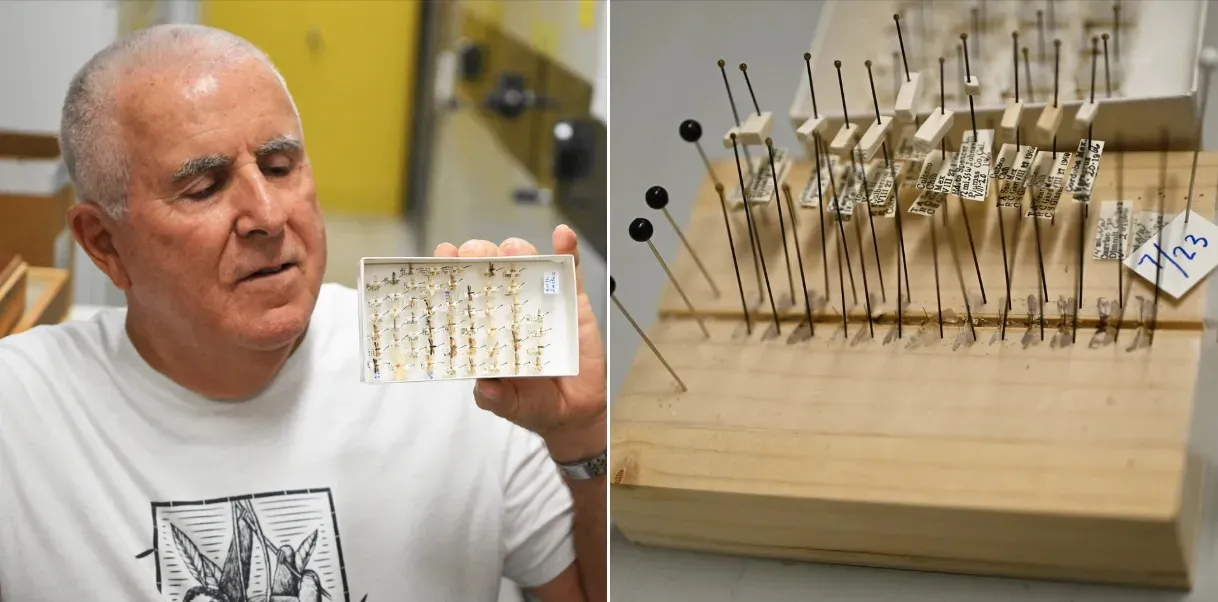Image

Several weeks ago, Jeff Smith, curator of the Lepidoptera collection at the Bohart Museum of Entomology, was curating micro-Lepidoptera from the Bohart scientists' collecting trip to Papua New Guinea.
He still is. And what incredible work he is doing.
The Bohart's expedition to Papua New Guinea in 2000 "brought back many hundreds of thousands of important specimens of insects and other arthropods, among them thousands of species of moths and butterflies," Smith said. "Particularly within the micro-Lepidoptera, the smallest of the kinds, there likely will be a great many undescribed species that are new to science."
It is possible, he added, that more than 90 percent of the species of tiny moths from tropical regions of the world are as yet unnamed.
"The Micro-Lepidoptera, so-called because so many are extremely small, often are some of the most colorful, a trait unseen until they are magnified and because most of them are active at night." Smith curated two species (pictured) in the family Crambidae. "They are called the Crambid Snout Moths. They are so tiny that a standard insect pin cannot be used through their thorax, but instead a tiny wire called a "minuten" is used and this is then placed into a soft material."
"The darker example (top) is in the Subfamily Acentropinae, and remarkably they are actually aquatic species, with more than 20 different kinds found in the material from the Bohart expedition," Smith related. "It is unknown how many different species do occur in this amazing tropical country."
Image

"More than 730 different species currently are known worldwide, about a dozen kinds in California, with a great many more to be discovered," Smith said. "The larvae of these moths feed on submerged vegetation in habitats from quiet ponds to fast-running streams. They may feed within the stems of the plants or on the surface of the leaves, algae, or other kinds of aquatic plants."
Smith said the larvae survive either by trapping air within a silk case they construct and live within or by use of external gills. The adult female moth can survive underwater for many hours, 'breathing' a supply of air trapped within the hairs and scales on her body, and depositing several hundred eggs onto vegetation.
"Most kinds of these moths have the characteristic row of shiny, silvery spots along the trailing edge of their hindwings, as well as other metallic spots on both forewings and hindwings," Smith noted. "One might question why they have all this decoration when they are active only at night, but it is useful to them for some reason."
"The second Crambid moth (second from top) currently is not identified by Bohart personnel at this time, but it seems worthy of display here for the attractive pink and yellow colors of all wings."
Image

The Bohart Museum, located in Room 1124 of the Academic Surge Building, 455 Crocker Lane, UC Davis campus, currently houses a global collection of eight million insect specimens. UC Davis entomology professor Richard Bohart (1913-2007), founded the museum in 1946.
Bohart Museum director is Professor Jason Bond, the Evert and Marion Schlinger Endowed Chair of Insect Systematics in the Department of Entomology and Nematology, and the executive associate dean, UC Davis College of Agricultural and Environmental Sciences. He succeeds UC Davis Distinguished Professor Emerita Lynn Kimsey, who directed the Bohart Museum for 34 years until her retirement in February 2024.
The Bohart Museum hosts open houses or special events throughout the academic year. (See the list and more information here.)

